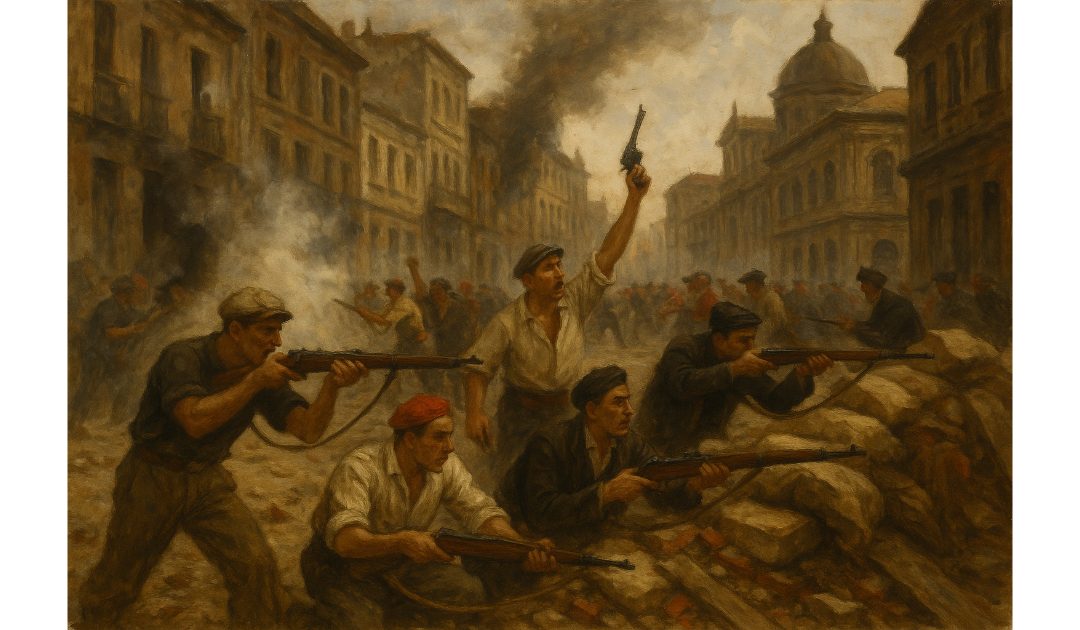On the 17th of July, 1936, the Spanish armed forces rebelled against the recently elected left-wing Popular Front government, sparking the Spanish Civil War. Vendetta in Spain, by Dennis Wheatley, is one of my favourite books. It gives a good account of the start of the civil war.
The origins of the Spanish Civil War can be traced back to deep-seated political, economic, and social tensions. Spain in the early 20th century was a nation grappling with the aftermath of lost colonial territories, economic stagnation, and stark class divisions. The establishment of the Second Spanish Republic in 1931, following the abdication of King Alfonso XIII, brought hopes for progressive reforms. The new government introduced measures such as land reforms, secularisation, and expanded workers’ rights. However, these reforms alienated powerful conservative factions, including the military, the Church, and landowners.
Political polarisation rapidly intensified. On one side were the Republicans, a coalition of left-wing groups including socialists, communists, anarchists, and liberals who supported the Republic and advocated for reforms and social justice. Opposing them were the Nationalists, comprising monarchists, conservatives, fascists, and sections of the military, led by General Francisco Franco. Their goal was to restore traditional values and establish an authoritarian regime.
The conflict soon became internationalised: Nazi Germany and Fascist Italy supported the Nationalists with troops, aircraft, and military equipment, viewing Spain as a battleground to test their military capabilities. The Soviet Union backed the Republicans, providing arms and advisors, while the International Brigades, composed of volunteers from around the globe, fought for the Republican cause.
The war was marked by extreme violence and atrocities committed by both sides. The Nationalists executed thousands of political opponents in what became known as the “White Terror,” while the Republicans conducted their own purges against clergy, conservatives, and suspected fascists in the “Red Terror.” The infamous bombing of Guernica in 1937 by German and Italian forces, immortalised in Pablo Picasso‘s haunting painting, highlighted the devastating impact of aerial bombardment on civilian populations.
By 1939, the Nationalists had gained the upper hand, thanks in part to superior military coordination and the extensive support from Germany and Italy. The fall of Madrid marked the definitive end of the war, and Franco established a dictatorship that would last until his death in 1975. His regime suppressed political dissent, curtailed freedoms, and maintained strict control over Spanish society.
The consequences of the Spanish Civil War were profound. It resulted in the deaths of an estimated 500,000 people, with many more exiled, imprisoned, or left traumatised. The war devastated Spain’s economy, infrastructure, and cultural fabric. Politically, it served as a grim prelude to the global conflict of World War II, showcasing the destructive potential of ideological extremism and totalitarian ambitions.
Spain remained neutral during World War II, but Franco’s dictatorship continued to exert a repressive grip on the country until the transition to democracy following his death. The legacy of the Spanish Civil War continues to shape Spain’s national consciousness, with debates about historical memory, justice for victims, and the interpretation of the conflict still resonating in contemporary Spanish society.

